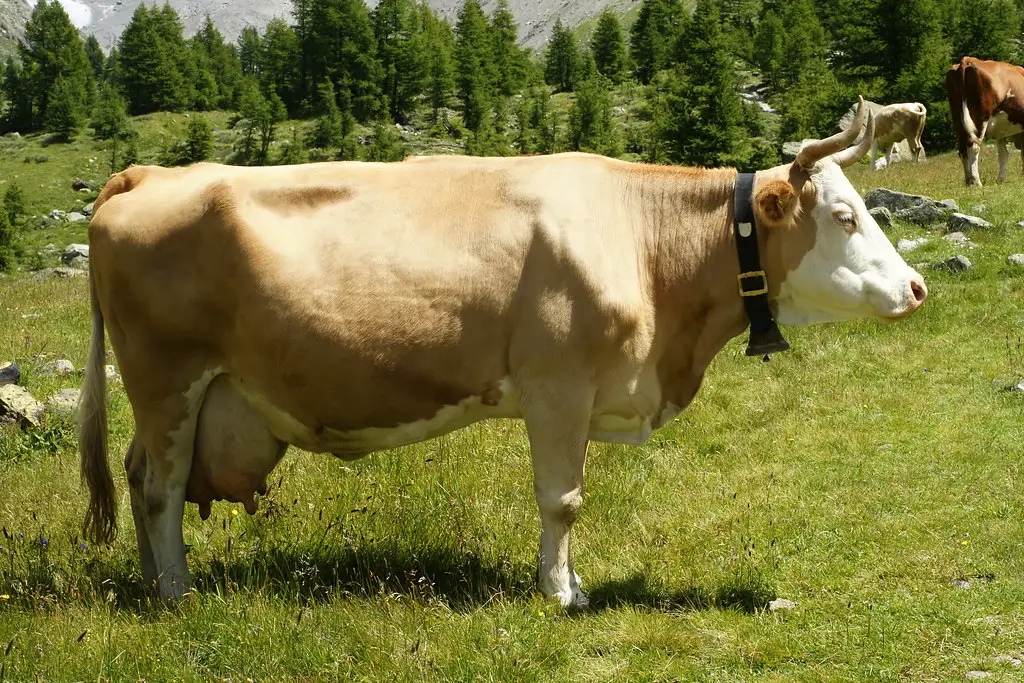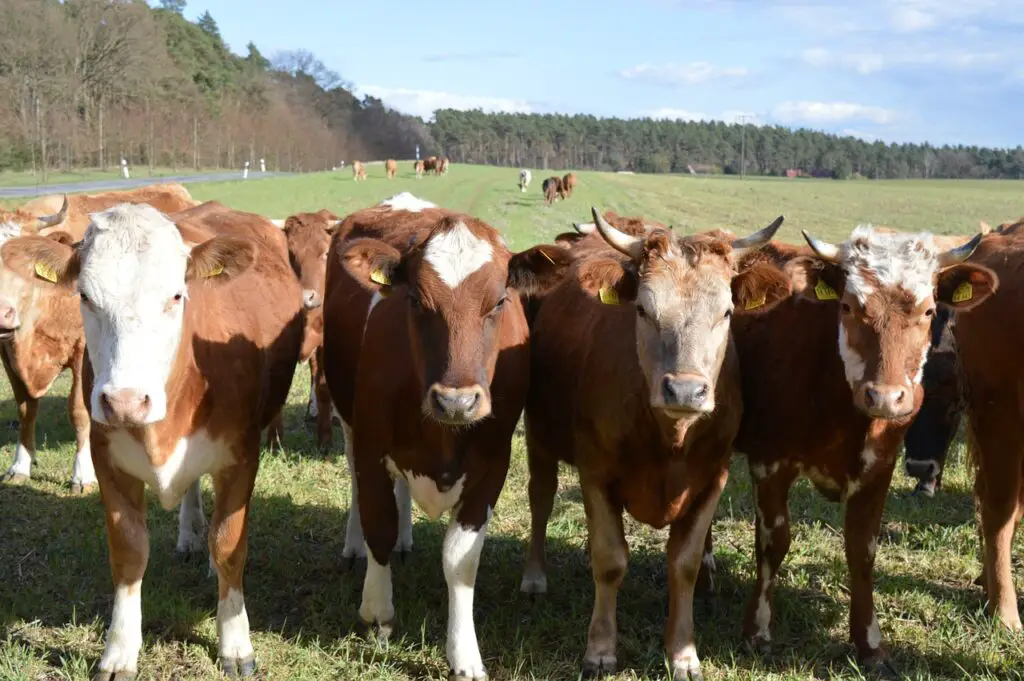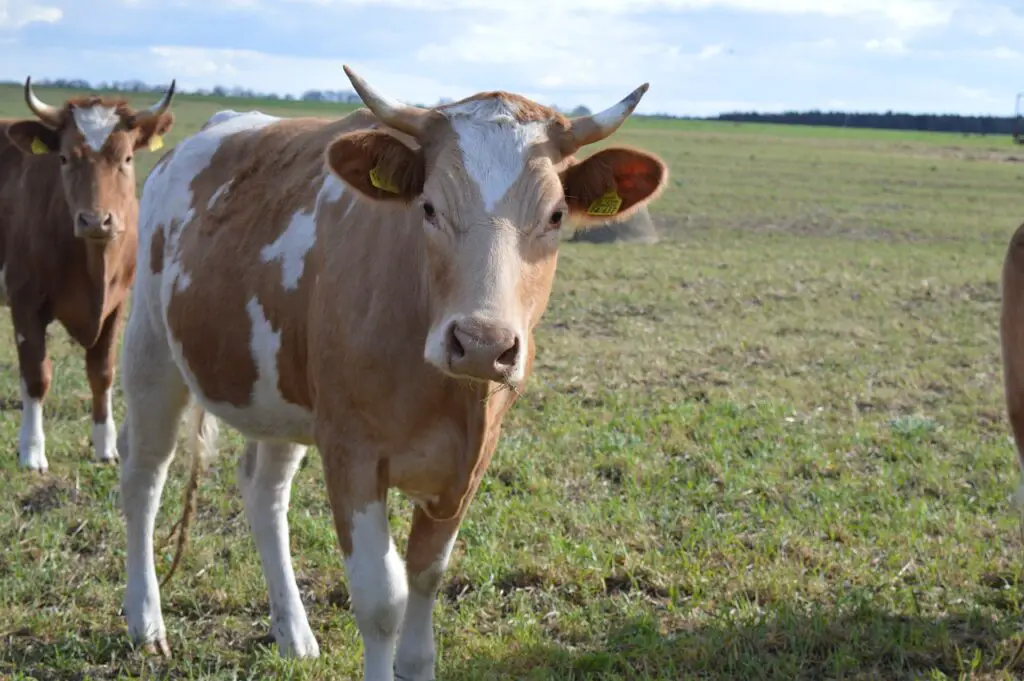
Meet the Simmental, a majestic cow with a beautiful reddish-gold and white coat, a gentle expression, and a reputation that spans centuries. Originating in Switzerland, this breed is a true multi-purpose marvel, excelling in producing milk, beef, and even serving as draft animals in the past. Let’s explore why Simmental Cattle continues to win fans worldwide.
Origin Of Simmental Cattle
The Simmental story begins in the picturesque Simme Valley of Switzerland. For centuries, farmers in this region prized hardy, versatile cattle, leading to the development of the Simmental breed. These Swiss cattle proved adaptable and spread throughout Europe. Today, they’re one of the most widespread cattle breeds globally, showcasing their resilience across various climates.
Characteristics
- Simmental Cattle Color: The classic Simmental boasts a reddish-gold coat with white markings, particularly on the face and legs. However, they can also be black, or various shades in between!
- Size and Build: Simmentals are large and well-muscled, striking a balance between beef and milk production.
- The Triple Crown: Historically, Simmentals were used for milk, meat, and draft work. While not as common for draft today, they maintain the milk and meat qualities.
- Docile Nature: Simmentals are known for their calm and gentle temperaments, making them a pleasure to work with.
Advantages And Disadvantages of Simmental Cattle
Simmental Cattle: Disadvantages
- Milk and Meat Stars: While not topping charts in either category alone, Simmentals offer a good balance of both milk production and beef quality.
- Hardiness and Adaptability: This breed thrives in various climates and environments, a testament to their centuries of development.
- Good Mothers: Simmental cows often have strong maternal instincts, generally leading to easier calving and calf rearing.
- Crossbreeding Success: Simmental genetics can improve milk and meat traits when crossbred with other cattle breeds.
Simmental Cattle: Advantages
- Not Production Specialists: They won’t break records for milk volume like Holsteins or beef muscle like Charolais, but they balance both well.
- Variation Within the Breed: With long history, some Simmentals focus on milk, others beef; choosing a line matching your goals is important.
- Horn Considerations: While polled (naturally hornless) Simmentals exist, many lines retain horns, which may require dehorning.

Simmental Cattle Facts
- Did you know Simmentals are one of the oldest recorded cattle breeds in the world? Historical documents mention them as far back as the Middle Ages!
Black Simmental Cattle
Black Simmentals exist. These can be a distinct registered breed or the result of historical crossbreeding with black Angus cattle.
Characteristics Table
| Characteristic | Description |
|---|---|
| Color | Yellowish brown to straw to dark red with white markings |
| Heat Tolerance | Moderate |
| Average Weight (cows) | 1,400-1,700 lbs |
| Average Weight (bulls) | 2,200-2,800 lbs |
| Size | Large-framed |
| Temperament | Docile |
| Maternal Traits | Excellent mothering ability |
| Milk Production | High milk yield |
| Beef Production | High growth rate, well-muscled |
| Other Notable Traits | Dual-purpose breed (meat and milk), adaptable to various climates |
FAQ
What is special about Simmental cattle?
Their long history, versatility (milk and meat), and adaptability.
Are Simmental cattle good to eat?
Yes, their meat has good flavor and marbling, known for tenderness
Are Simmental cattle docile?
Generally, yes! Their calm nature is one of their defining traits.

Conclusion
Whether you’re a seasoned rancher or a homesteader seeking a multi-purpose breed, the Simmental deserves your consideration. Their versatility, adaptability, and generally easy-going nature make them a compelling choice. With a rich history and continued popularity worldwide, the Simmental stands as a testament to the value of well-rounded, hardy cattle.
Have you had any experience with Simmental cattle? Would you consider raising them? Share your thoughts and experiences in the comments below!
